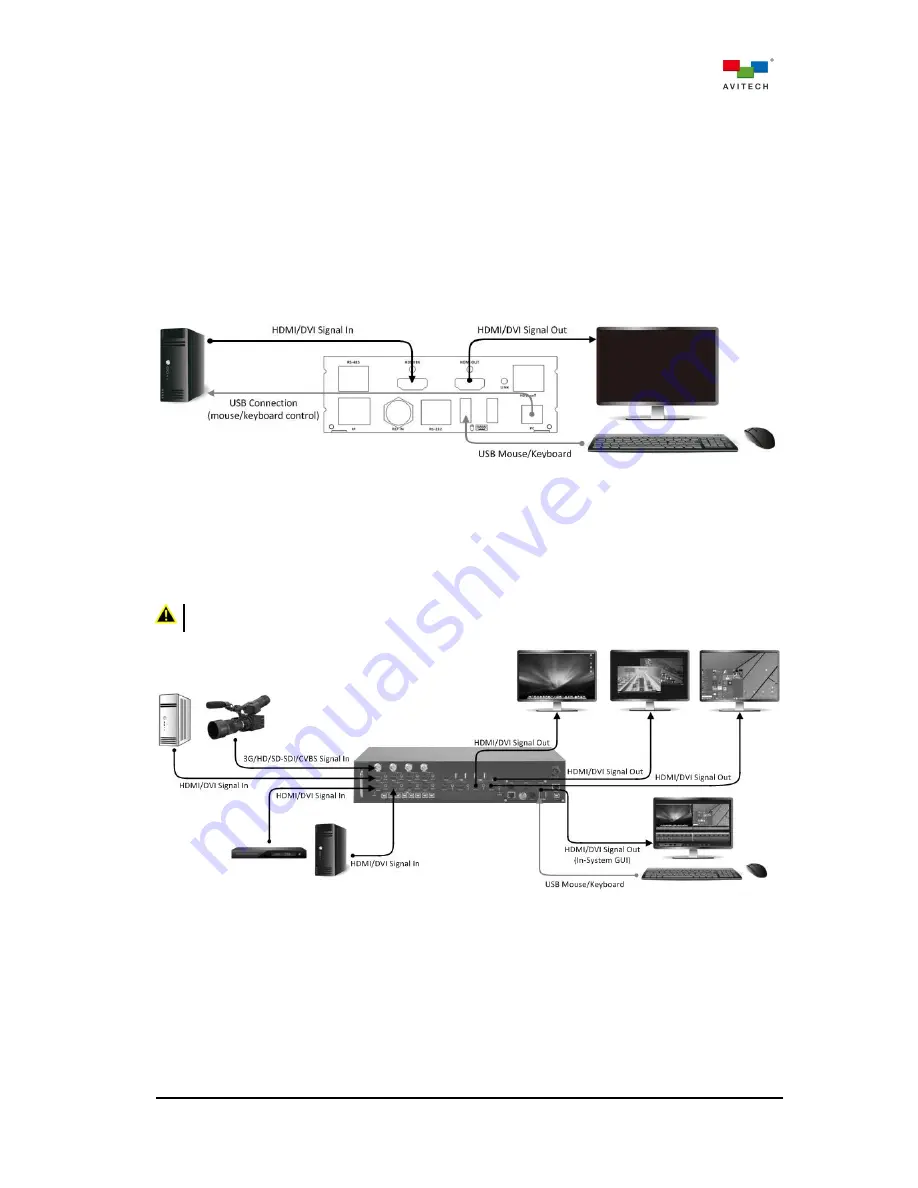
21
The Pacific MS also enables bypassing the video and control signal of a local computer through the
control card, allowing the in-system GUI and the local computer to be operated interchangeably using
the same set of monitor, mouse, and keyboard.
To have a local computer set up with the Pacific MS, connect the local computer’s HDMI (or DVI with
DVI to HDMI adapter) output to the control card’s
HDMI IN
. Then connect the local computer’s USB type
A port to the USB type B port (
PC
) of the control card using a standard USB A/B cable.
Once the connection is made, you will be able to freely switch monitoring and control between the
Pacific MS’ in-system GUI and your local computer on the same monitor and mouse/keyboard. Refer to
section 4.5 “Module Switching in a Cascaded System” for more information in detail.
Figure 2-17
Control Card Cabling for In-system GUI/Local Computer Display and Control
2.8 Basic Setup for Video Switching and Routing
The following shows a typical setup with a single Pacific MS connected to computer/video sources and
monitors for video switching/routing.
DO NOT place any object on the top or side panels of the Pacific MS.
Doing so could affect its internal components and/or its heat dissipation.
Figure 2-18
Pacific MS with Video Routing Setup
Step 1. Connect a computer or video source to the HDMI or BNC connector of the Pacific MS’ input
card. Repeat the step for all source devices.
Step 2. Connect a HDMI or DVI (through a HDMI to DVI adapter) monitor to the HDMI port of the Pacific
MS’ output card. To simultaneously view multiple sources on a single monitor, connect that
monitor to one of the multiviewer output (SOB-HPW or SOB-QPW). Repeat the step for all
monitors.
















































